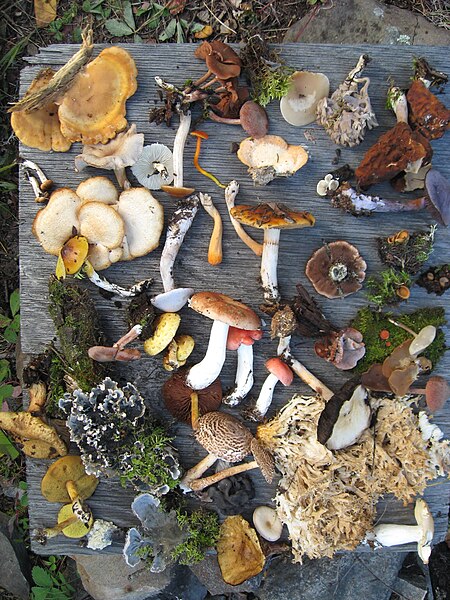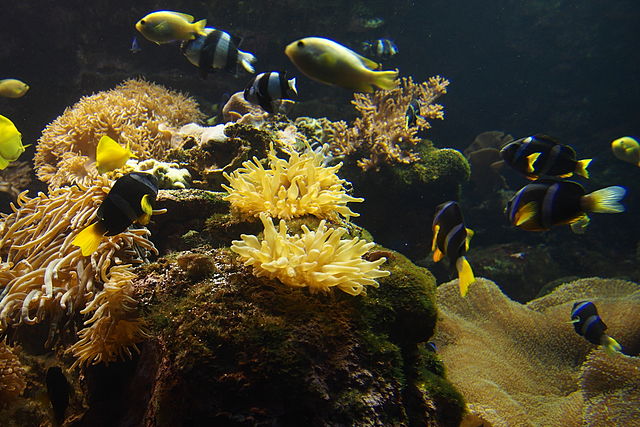Biodiversity is the variety and variability of life on Earth. It can be measured on various levels. There is for example genetic variability, species diversity, ecosystem diversity and phylogenetic diversity. Diversity is not distributed evenly on Earth. It is greater in the tropics as a result of the warm climate and high primary productivity in the region near the equator. Tropical forest ecosystems cover less than one-fifth of Earth's terrestrial area and contain about 50% of the world's species. There are latitudinal gradients in species diversity for both marine and terrestrial taxa.
An example of the biodiversity of fungi in a forest in North Saskatchewan (in this photo, there are also leaf lichens and mosses).
Shown in a museum, various models of species across various taxa and orders visualize the variety of life on earth.
Summary of major biodiversity-related environmental-change categories expressed as a percentage of human-driven change (in red) relative to baseline (blue)
Summer field in Belgium (Hamois). The blue flowers are Centaurea cyanus and the red are Papaver rhoeas.
Life is a quality that distinguishes matter that has biological processes, such as signaling and self-sustaining processes, from matter that does not. It is defined descriptively by the capacity for homeostasis, organisation, metabolism, growth, adaptation, response to stimuli, and reproduction. All life over time eventually reaches a state of death and none is immortal. Many philosophical definitions of living systems have been proposed, such as self-organizing systems. Viruses in particular make definition difficult as they replicate only in host cells. Life exists all over the Earth in air, water, and soil, with many ecosystems forming the biosphere. Some of these are harsh environments occupied only by extremophiles.
Life
Animal corpses, like this African buffalo, are recycled by the ecosystem, providing energy and nutrients for living organisms.
Adenoviruses as seen under an electron microscope
Cyanobacteria dramatically changed the composition of life forms on Earth by leading to the near-extinction of oxygen-intolerant organisms.








